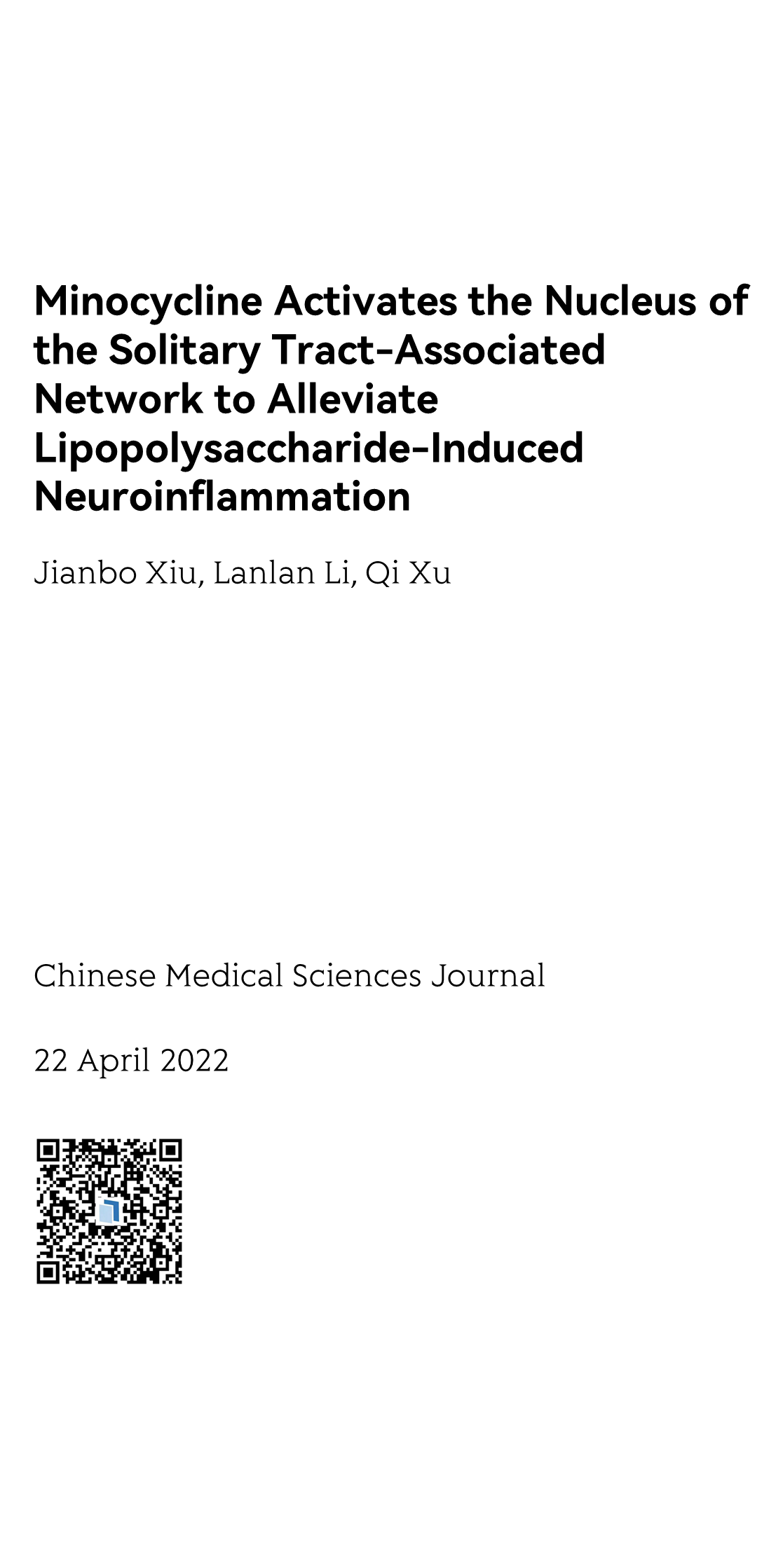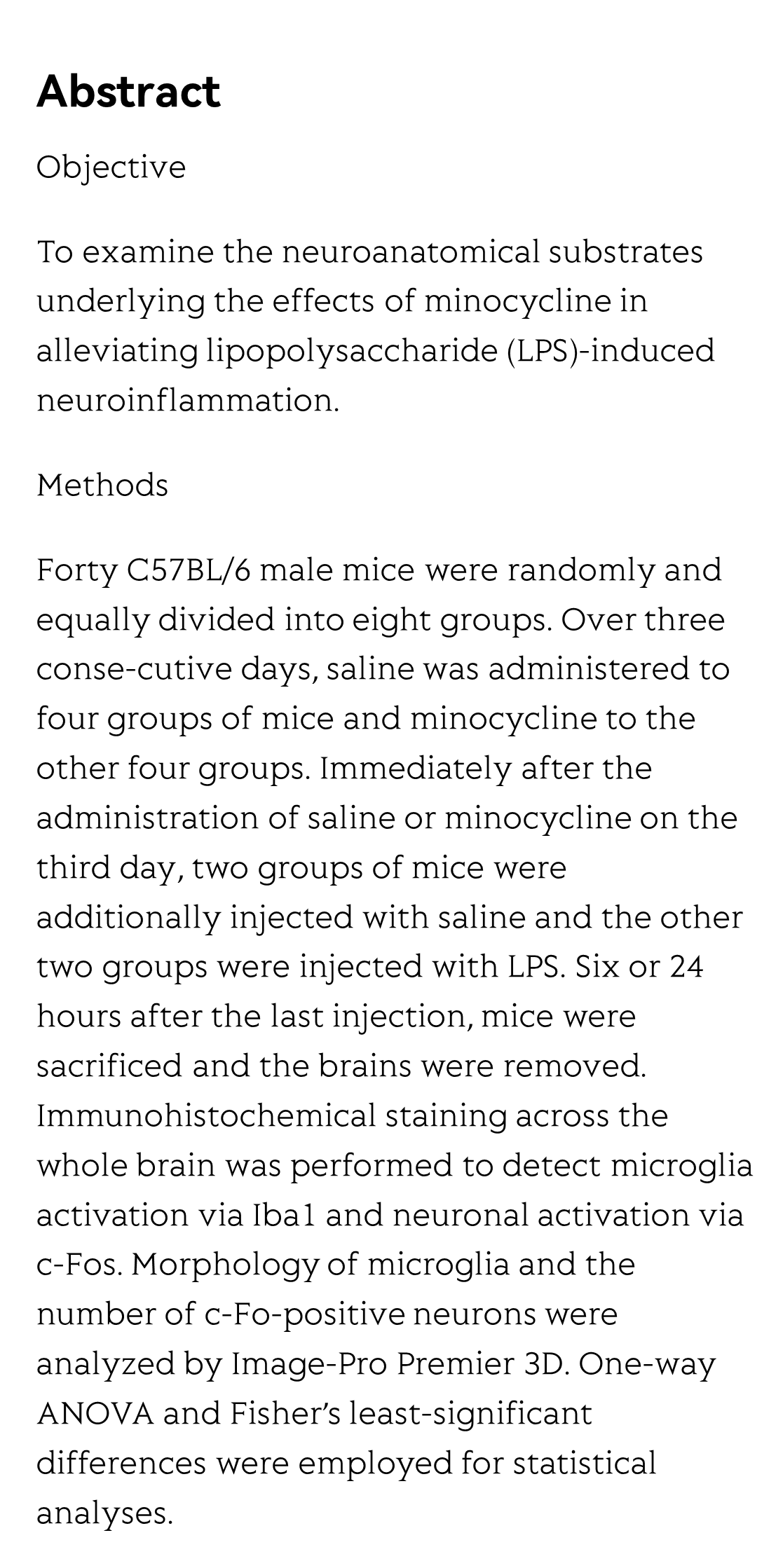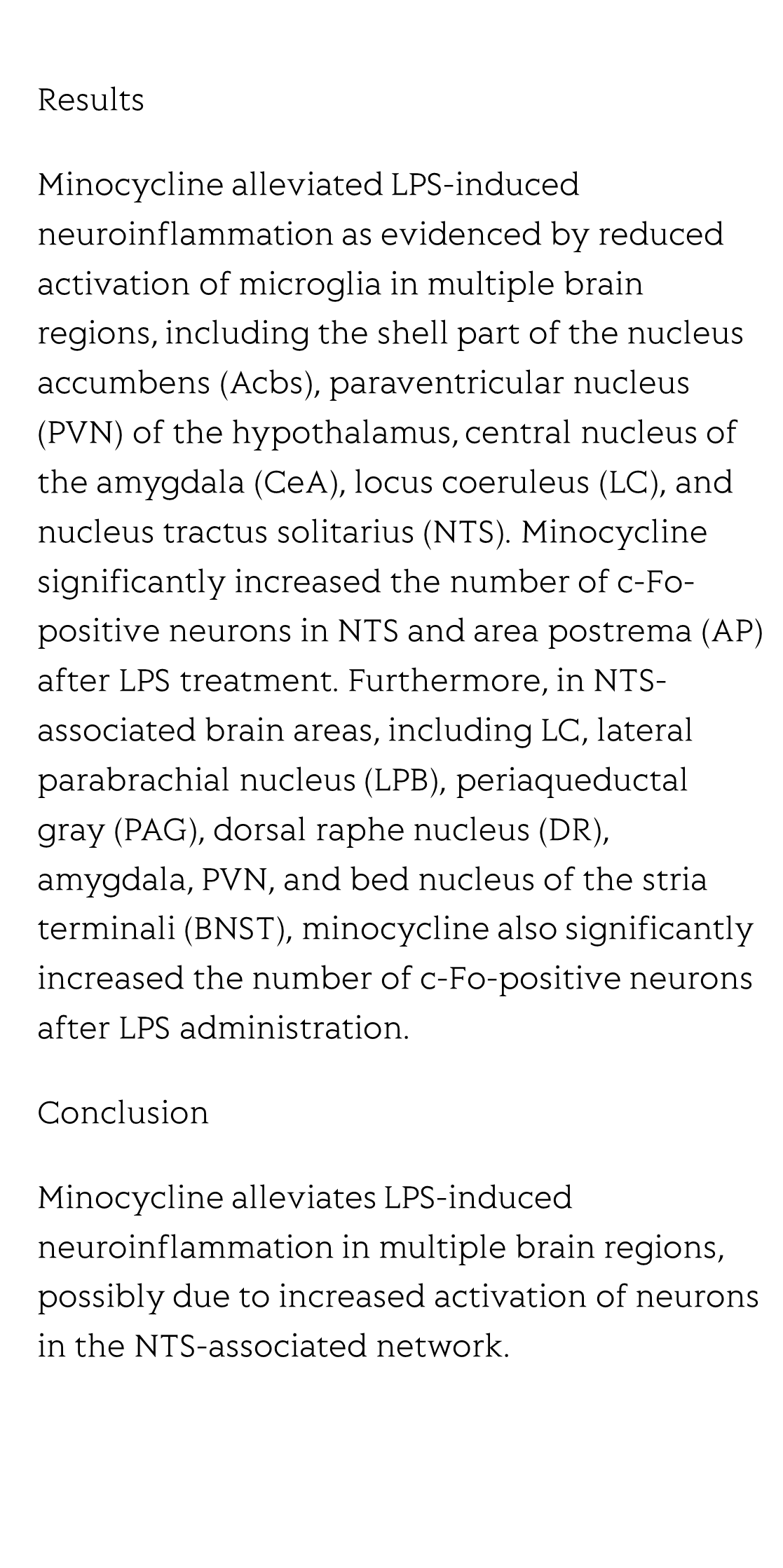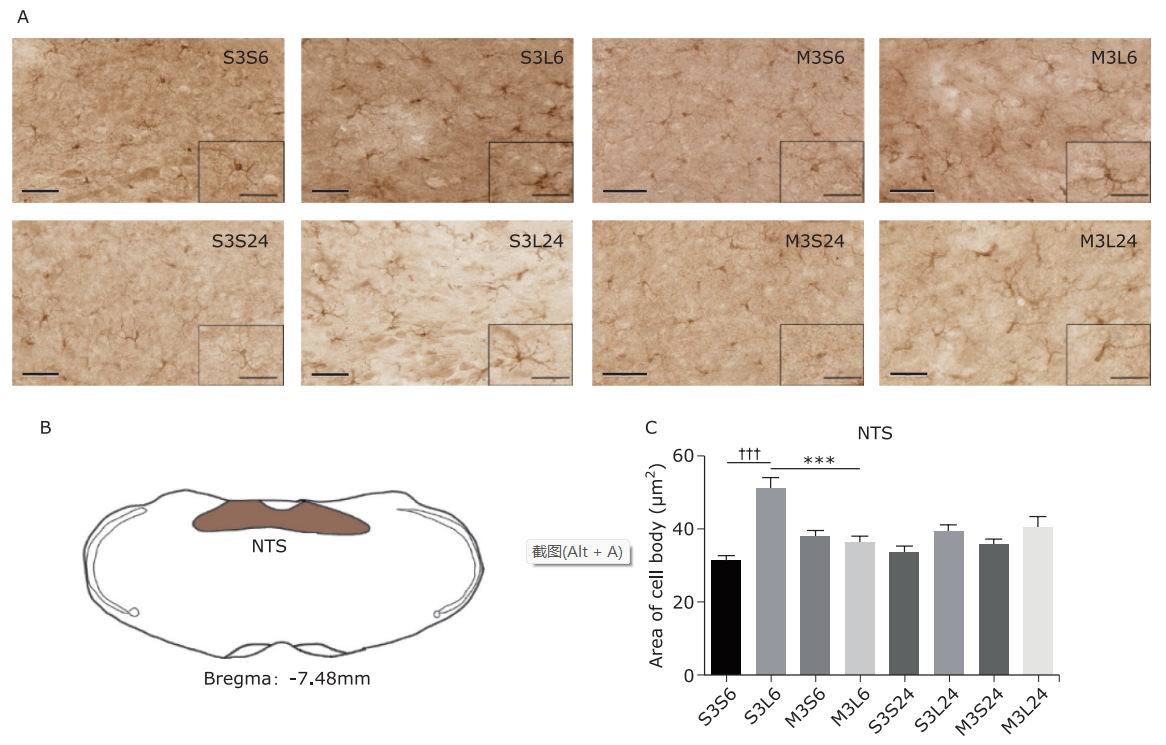(Peer-Reviewed) Minocycline Activates the Nucleus of the Solitary Tract-Associated Network to Alleviate Lipopolysaccharide-Induced Neuroinflammation
Jianbo Xiu 修建波 ¹ ², Lanlan Li 李岚岚 ¹ ², Qi Xu 许琪 ¹ ²
¹ State Key Laboratory of Medical Molecular Biology, Institute of Basic Medical Sciences, Chinese Academy of Medical Sciences, School of Basic Medicine Peking Union Medical College, Beijing 100005, China
中国 北京 中国医学科学院基础医学研究所 北京协和医学院基础学院 医学分子生物学国家重点实验室
² Neuroscience Center, Chinese Academy of Medical Sciences, Beijing 100005, China
中国 北京 中国医学科学院神经科学中心
Abstract
Objective
To examine the neuroanatomical substrates underlying the effects of minocycline in alleviating lipopolysaccharide (LPS)-induced neuroinflammation.
Methods
Forty C57BL/6 male mice were randomly and equally divided into eight groups. Over three conse-cutive days, saline was administered to four groups of mice and minocycline to the other four groups. Immediately after the administration of saline or minocycline on the third day, two groups of mice were additionally injected with saline and the other two groups were injected with LPS. Six or 24 hours after the last injection, mice were sacrificed and the brains were removed. Immunohistochemical staining across the whole brain was performed to detect microglia activation via Iba1 and neuronal activation via c-Fos. Morphology of microglia and the number of c-Fo-positive neurons were analyzed by Image-Pro Premier 3D. One-way ANOVA and Fisher’s least-significant differences were employed for statistical analyses.
Results
Minocycline alleviated LPS-induced neuroinflammation as evidenced by reduced activation of microglia in multiple brain regions, including the shell part of the nucleus accumbens (Acbs), paraventricular nucleus (PVN) of the hypothalamus, central nucleus of the amygdala (CeA), locus coeruleus (LC), and nucleus tractus solitarius (NTS). Minocycline significantly increased the number of c-Fo-positive neurons in NTS and area postrema (AP) after LPS treatment. Furthermore, in NTS-associated brain areas, including LC, lateral parabrachial nucleus (LPB), periaqueductal gray (PAG), dorsal raphe nucleus (DR), amygdala, PVN, and bed nucleus of the stria terminali (BNST), minocycline also significantly increased the number of c-Fo-positive neurons after LPS administration.
Conclusion
Minocycline alleviates LPS-induced neuroinflammation in multiple brain regions, possibly due to increased activation of neurons in the NTS-associated network.
Flicker minimization in power-saving displays enabled by measurement of difference in flexoelectric coefficients and displacement-current in positive dielectric anisotropy liquid crystals
Junho Jung, HaYoung Jung, GyuRi Choi, HanByeol Park, Sun-Mi Park, Ki-Sun Kwon, Heui-Seok Jin, Dong-Jin Lee, Hoon Jeong, JeongKi Park, Byeong Koo Kim, Seung Hee Lee, MinSu Kim
Opto-Electronic Advances
2025-09-25
Dual-frequency angular-multiplexed fringe projection profilometry with deep learning: breaking hardware limits for ultra-high-speed 3D imaging
Wenwu Chen, Yifan Liu, Shijie Feng, Wei Yin, Jiaming Qian, Yixuan Li, Hang Zhang, Maciej Trusiak, Malgorzata Kujawinska, Qian Chen, Chao Zuo
Opto-Electronic Advances
2025-09-25







